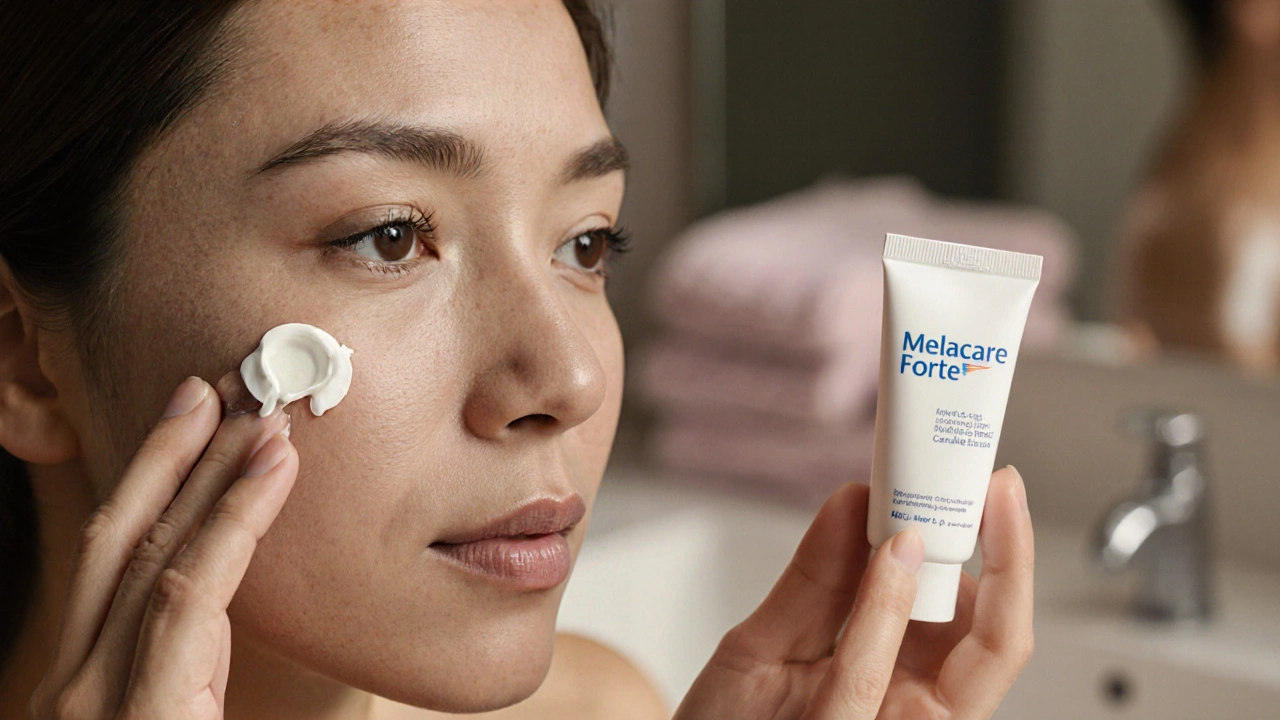Hydroquinone Cream – Uses, Safety Tips & Alternatives
When you hear about hydroquinone cream, a topical skin‑lightening agent that blocks melanin production. Also known as HQ cream, it’s commonly used to treat melasma, dark patches on the face often linked to hormonal changes and broader hyperpigmentation, areas of excess pigment from sun exposure, injury or inflammation.
What You Need to Know About Hydroquinone Cream
At its core, hydroquinone cream works by inhibiting the enzyme tyrosinase – the catalyst that turns tyrosine into melanin. This inhibition is the key mechanism that reduces dark spots over time. Dermatologists often advise a patch test before the first full application to gauge skin sensitivity. If you notice redness or burning, you can usually back off or switch to a lower concentration. The typical prescription strength ranges from 2% to 4%, and treatment cycles normally last 8‑12 weeks, followed by a break to lower the risk of ochronosis, a rare but permanent darkening.
Sun protection is non‑negotiable when using any skin‑lightening product. Daily broad‑spectrum sunscreen with at least SPF 30 acts like a barrier, preventing new pigment from forming while the cream does its job. In practice, you’ll apply hydroquinone at night, let it absorb, and then use sunscreen every morning. Pairing the cream with gentle moisturizers helps maintain the skin barrier and reduces irritation. Many users report smoother texture after the first few weeks, but consistency is essential for visible results.
Side effects can range from mild dryness to more serious issues like contact dermatitis or exogenous ochronosis, especially with concentrations above 4% or prolonged use. Pregnant or nursing individuals should avoid hydroquinone entirely, as safety data is limited. If you experience persistent itching, scaling, or a violet hue, stop using the product and consult a dermatologist. They might recommend alternating with a lower‑strength formula or introducing a break phase to let your skin recover.
If hydroquinone feels too harsh, there are several dermatologist‑approved alternatives. Azelaic acid, for example, gently reduces pigment while also treating acne. Kojic acid and glycolic acid work by exfoliating the surface and inhibiting melanin synthesis, though they may cause sensitivity in some skin types. Niacinamide and vitamin C are antioxidant options that brighten without the risk of ochronosis. Many users combine a lower‑strength hydroquinone with these agents for a balanced approach.
Buying hydroquinone cream safely starts with confirming whether you need a prescription or can use an over‑the‑counter (OTC) version. In many countries, 2% formulations are available OTC, while higher strengths require a doctor’s script. When shopping online, verify that the pharmacy is licensed, check for third‑party testing, and compare prices to avoid counterfeit products. A reputable source will ask for a prescription copy for stronger formulas and will provide clear dosage instructions.
Monitoring progress is crucial. Take photos every two weeks under the same lighting to track fading of spots. If after 12 weeks you see minimal improvement, discuss alternative treatments with your dermatologist – they may suggest laser therapy or a different topical regimen. Once your desired lightness is achieved, a maintenance plan using a lower‑strength cream or a gentle brightening serum can keep the results steady without over‑exposing your skin to potent actives.
Below you’ll find a curated selection of articles that dive deeper into each of these topics, from detailed comparisons of hydroquinone versus its alternatives to step‑by‑step guides for safe online purchases. Explore the resources to fine‑tune your skin‑lightening journey and make informed choices backed by medical expertise.

Melacare Forte Cream vs Top Hyperpigmentation Alternatives: Full Comparison
Discover how Melacare Forte Cream compares to leading hyperpigmentation alternatives, covering ingredients, efficacy, side effects, pricing, and tips for choosing the right skin‑lightening solution.
Detail




